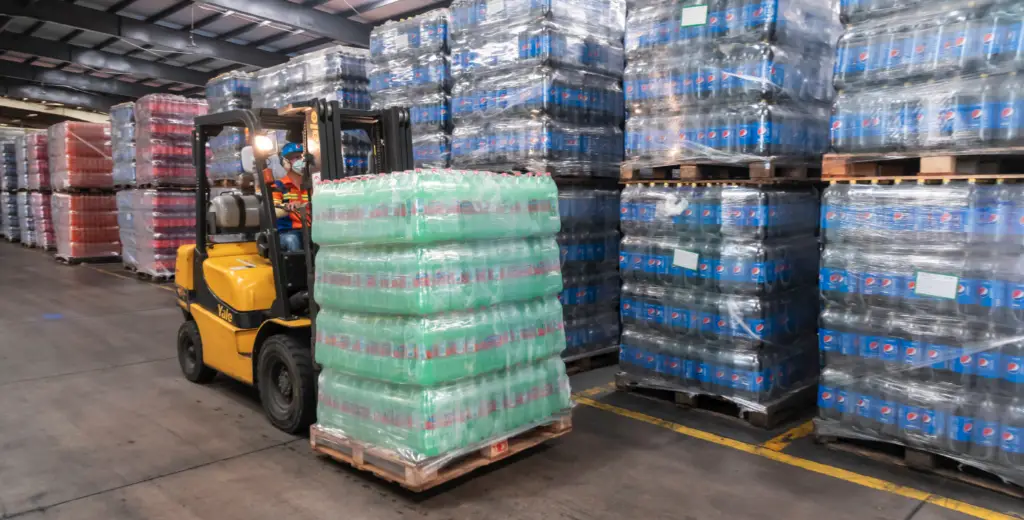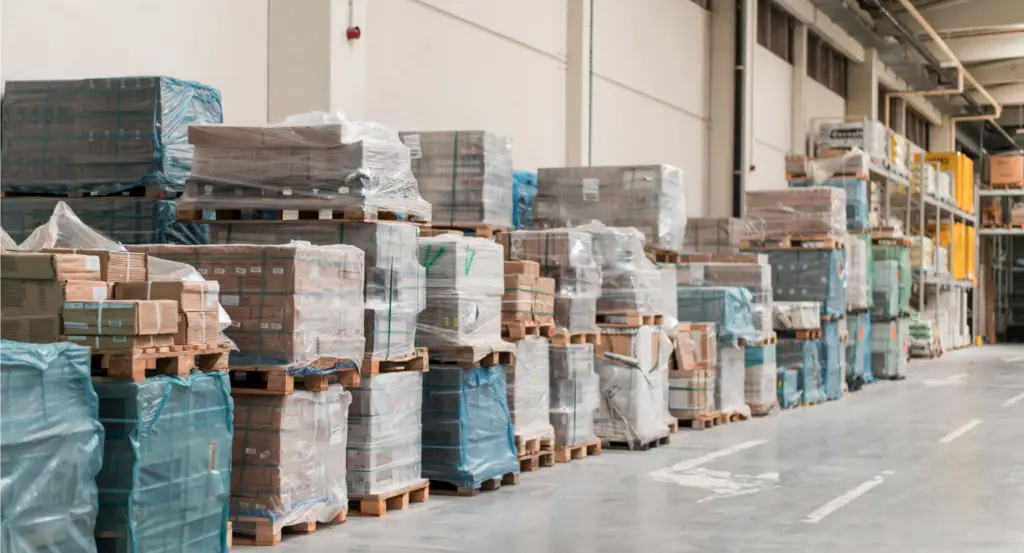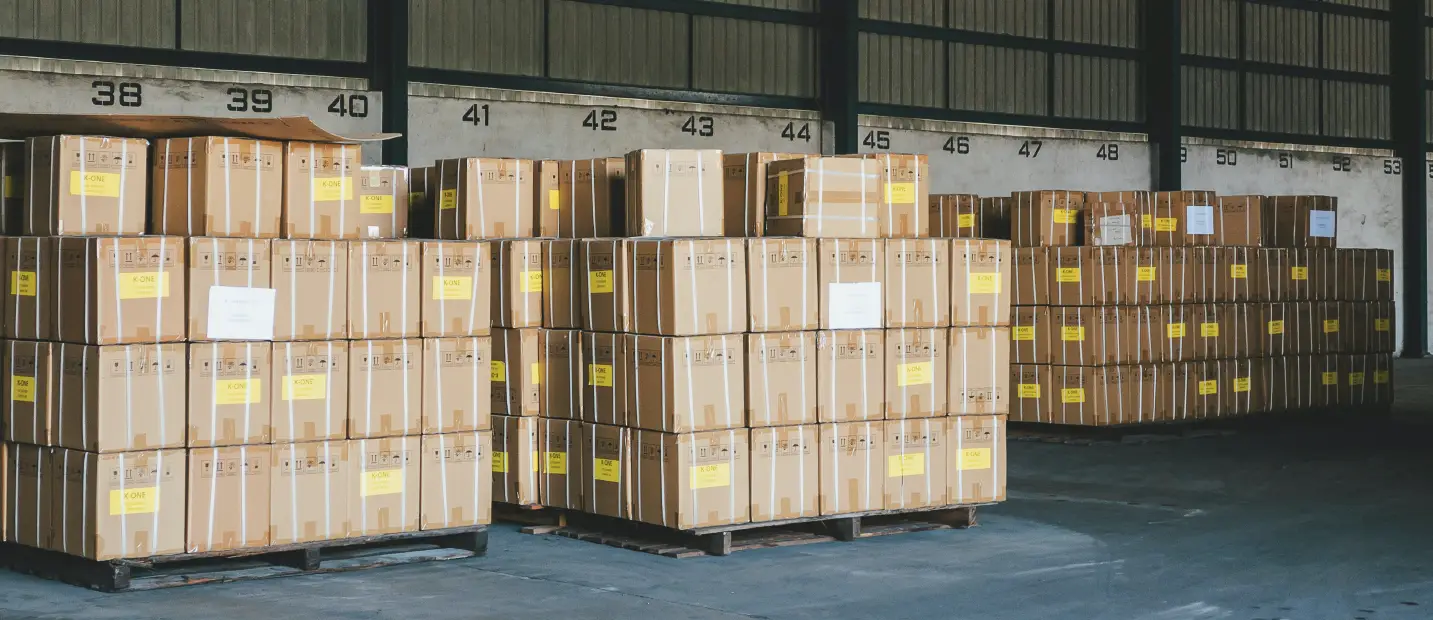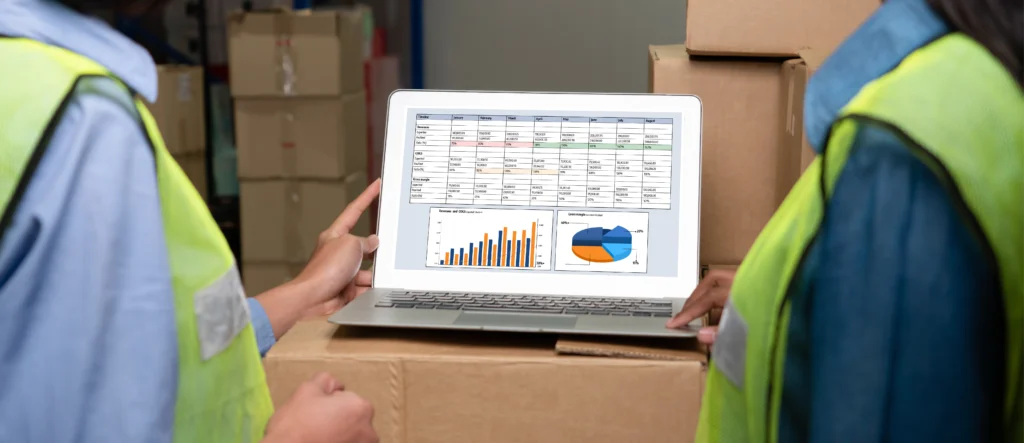What is the palletizing system?
Palletizing is a logistics process that consists of organizing and placing products or goods on a flat platform called a pallet or pallet. These pallets are horizontal structures, usually made of wood or plastic, that facilitate the efficient transport and handling of products in warehouses, factories and during shipping.
The main objective of palletizing is to optimize storage and transportation space, as well as to facilitate the handling of goods with equipment such as forklifts. This method offers several benefits, such as:
- Efficient handling: By placing products on pallets, the movement and handling of goods is facilitated. Pallets can be easily lifted with handling equipment, such as forklifts, which streamlines logistics operations.
- Space savings: By grouping products on pallets, space in warehouses and transport trucks is better utilized. This reduces the need to store or transport products individually, which in turn reduces costs and improves process efficiency.
- Safety: Palletizing contributes to the safety of both products and workers. By properly organizing and securing goods on pallets, the risk of damage during handling and transport is reduced.
- Facilitates inventory: Counting and managing inventories becomes easier when products are organized on pallets. This makes it easier to track inventory and conduct periodic inventories.
- Efficient loading and unloading: Palletization simplifies the truck loading and unloading process, as pallets can be stacked neatly, maximizing available space.
Palletizing is a logistics strategy that seeks to improve efficiency in the handling, storage and transportation of products through the use of pallets. This method is widely used in the industry to optimize processes and reduce costs associated with logistics.
What are the types of logistics operators?
Palletizing cargo offers several advantages and benefits in terms of logistics efficiency and goods handling. Here are some of the main advantages:
- Space Optimization: Palletizing allows efficient use of storage and transportation space. By placing products on pallets, it facilitates the creation of compact and stackable units, maximizing available space in warehouses and trucks.
- Ease of Handling: Pallets are designed to be easily handled with equipment such as forklifts. This simplifies loading, unloading and goods movement operations, which in turn increases the speed and efficiency of logistics operations.
- Damage Reduction: By palletizing cargo in a safe and stable manner, the risk of damage to products during transport and handling is minimized. Pallets provide a solid and uniform base that protects the products and facilitates their transport without any shocks or sudden movements.
- Greater Inventory Control: Palletizing simplifies the inventory tracking and control process. Organized palletizing facilitates product identification and inventory taking, which contributes to more efficient management of inventory levels.
- Distribution Efficiency: By palletizing products uniformly, distribution efficiency is improved. Pallets facilitate quick loading and unloading in warehouses and retail outlets, which streamlines the distribution process.
- Cost Reduction: Palletization can contribute to reduced operating costs. By optimizing storage and transportation space, costs associated with warehousing, goods handling and transportation expenses are reduced.
- Improved Workplace Safety: By facilitating the handling of goods with appropriate equipment, such as forklifts, the risk of injury to workers is reduced. Orderly and safe palletizing contributes to a safer working environment.

How is the palletizing process?
The palletizing process can vary by industry and specific supply chain requirements, but these general steps provide an overview of the common activities involved in preparing and arranging products on pallets. The following is a step-by-step description of the palletizing process:
| Product Preparation | Products to be palletized should be ready and prepared for palletizing. This may include placing products in boxes, bags or other appropriate containers. |
| Pallet Selection | Suitable pallets are selected for the load, considering the size and weight of the products. Pallets can be made of wood, plastic or metal, and their choice will depend on the specific needs of the cargo and the logistic environment. |
| Configuration Design | The arrangement of the products on the pallet is planned. This involves deciding how the products will be stacked to optimize space and ensure load stability. |
| Product Placement | Products are placed on the pallet according to the planned layout. It is important to ensure that the load is balanced and that the products are placed securely to prevent damage during handling and transport. |
| Fixing and Stabilization | Depending on the nature of the products and the method of transport, methods may be used to secure and stabilize the cargo. This may include the use of elastic bands, plastic film wrapping or the use of specific restraint systems. |
| Identification and Labeling | Pallets are labeled for easy identification of the load. This is especially important for inventory tracking and logistics management. |
| Load Verification | A load check is performed to ensure that the load has been completed correctly. This includes visually checking the stability of the load and confirming that established procedures have been followed. |
| Storage or Transportation | Once the cargo has been palletized and verified, it is moved to the storage area or loaded onto transport vehicles, such as trucks or sea containers. |
| Depalletizing (at destination, if necessary) | At the final destination, the cargo may be depalletized for distribution or storage. This process involves carefully removing the products from the pallets. |
You might be interested in: Challenges in your inventory?
What are the palletizing techniques?
There are several common techniques for palletizing a load, each designed to meet different needs and product types. Some of the most common techniques are:
| Blocking or Stowage | It consists of stacking products in an orderly manner, creating compact blocks that fill the entire surface of the pallet. This method is efficient for regular shaped products and is commonly used in the food and beverage industry. |
| Matrix Formation | Products are arranged in a matrix on the pallet, filling each space evenly. This approach is useful to optimize space and ensure load stability. |
| Spiral Palletizing | Products are stacked in a spiral around the pallet, starting from the center and moving outward. This method is useful for products that cannot be stacked in the traditional manner and is used in industries such as pharmaceuticals. |
| Layer Palletizing | Products are layered on the pallet, with each layer consisting of a specific pattern. This method is common in the consumer goods industry and allows for fast and efficient loading. |
| Palletizing by Groups or Blocks | Products are grouped into blocks before being placed on the pallet. This approach is useful for products that must be kept separate by category or type. |
| Gravity Palletizing | It takes advantage of the inclination of the pallet to allow the products to slide down by gravity. It is common in the beverage industry for palletizing cases of bottles or cans. |
| Robotic Palletizing | Robots are used to palletize products automatically. This method is efficient in terms of speed and accuracy, and is common in industries with high production volumes. |
| Mixed Palletizing | More than one palletizing technique is combined to optimize the load, especially when there are products of different sizes or shapes. |
The choice of palletizing technique depends on several factors, such as the type of products, available space, transport requirements and the capabilities of the equipment used in the logistics process.

Learn | What are the UIAs (Accredited Inspection Units)?
Palletizing errors and solutions
When palletizing, it is important to avoid certain mistakes to ensure efficiency and safety in logistics operations. Here are some of the most common palletizing mistakes:
| Error | Solution | |
|---|---|---|
| Unequal Load | Placing products unevenly on the pallet may cause instability and risk of falling during transport or handling. | Distribute products evenly to maintain load stability. |
| Excessive height | Stacking the load too high can increase the risk of tipping and hinder load stability. | Respect recommended height limitations and use safe methods for palletizing. |
| Inadequate load securing | Failure to properly secure the load to the pallet can result in shifting and damage during transport. | Use securing methods such as elastic bands or plastic wrap to keep the load stable. |
| Incorrect Use of Pallets | Using unsuitable pallets in terms of size, load capacity or type of product. | Select pallets that are appropriate for the specific load and logistical conditions. |
| Lack of labeling | Failure to properly label or identify pallets can hinder inventory tracking and logistics management. | Clearly label pallets with relevant information, such as content and destination. |
| Ignoring Manufacturer's Recommendations | Failure to follow the manufacturer's instructions regarding maximum load, storage and transport conditions. | Respect the manufacturer's instructions to ensure the safety and integrity of the products. |
| Lack of Staff Training | Failure to provide adequate training to palletizing personnel. | Train personnel in best practices for palletizing, safety and equipment use. |
| Neglect of Space Planning | Failure to adequately consider available space in warehouses or transport vehicles when palletizing. | Plan carefully to optimize the use of space and prevent problems during loading and unloading. |
Avoiding these errors will contribute to a more efficient, safe and reliable palletizing process in the handling of goods throughout the supply chain.
At ABC Logistics we provide you with integral logistics solutions to meet your business needs, learn about our warehousing services, tax warehouse, fulfillment for ecommerce to nationwide distribution. Contact us!





